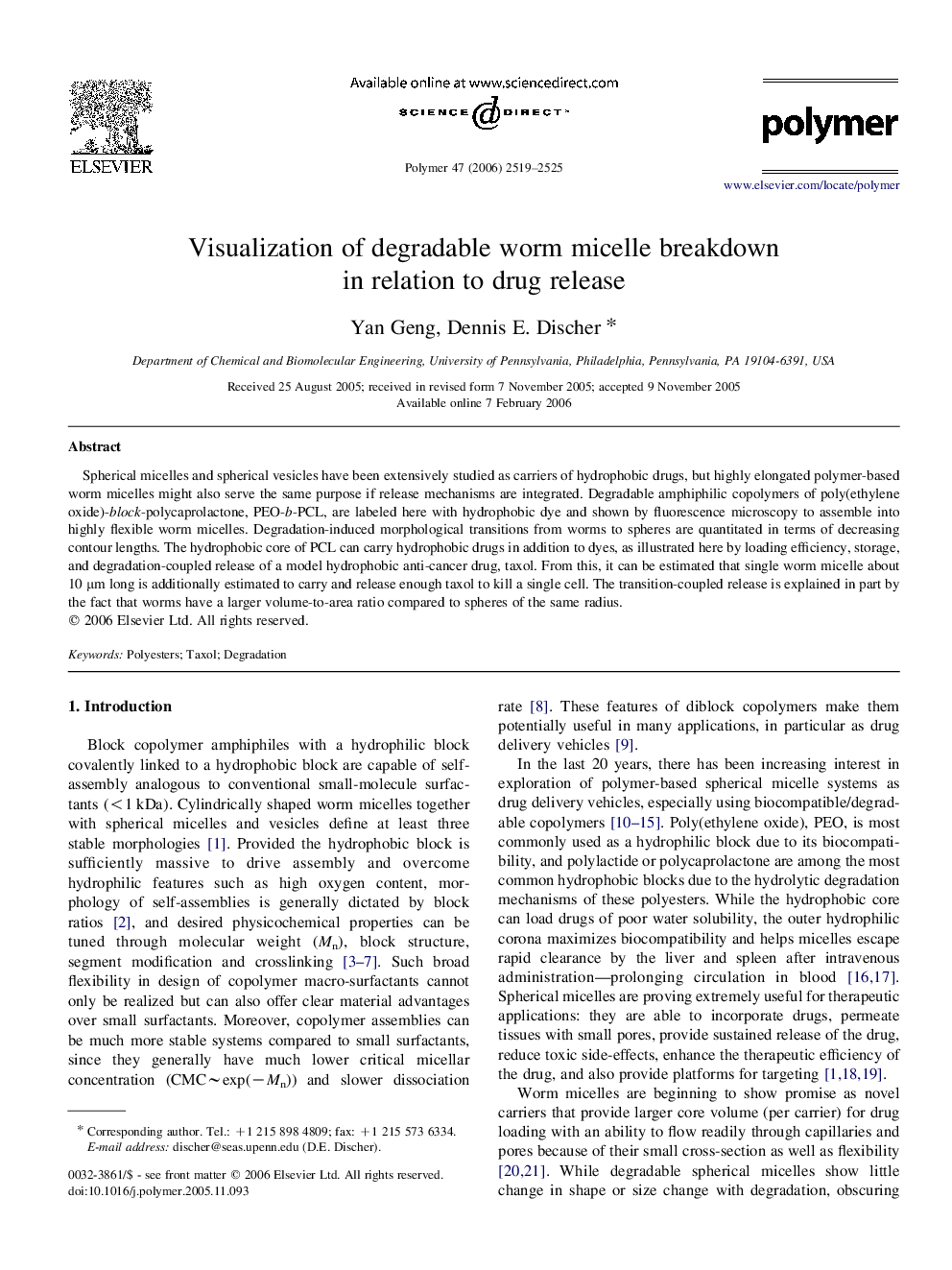| Article ID | Journal | Published Year | Pages | File Type |
|---|---|---|---|---|
| 5191003 | Polymer | 2006 | 7 Pages |
Abstract
Spherical micelles and spherical vesicles have been extensively studied as carriers of hydrophobic drugs, but highly elongated polymer-based worm micelles might also serve the same purpose if release mechanisms are integrated. Degradable amphiphilic copolymers of poly(ethylene oxide)-block-polycaprolactone, PEO-b-PCL, are labeled here with hydrophobic dye and shown by fluorescence microscopy to assemble into highly flexible worm micelles. Degradation-induced morphological transitions from worms to spheres are quantitated in terms of decreasing contour lengths. The hydrophobic core of PCL can carry hydrophobic drugs in addition to dyes, as illustrated here by loading efficiency, storage, and degradation-coupled release of a model hydrophobic anti-cancer drug, taxol. From this, it can be estimated that single worm micelle about 10 μm long is additionally estimated to carry and release enough taxol to kill a single cell. The transition-coupled release is explained in part by the fact that worms have a larger volume-to-area ratio compared to spheres of the same radius.
Keywords
Related Topics
Physical Sciences and Engineering
Chemistry
Organic Chemistry
Authors
Yan Geng, Dennis E. Discher,
